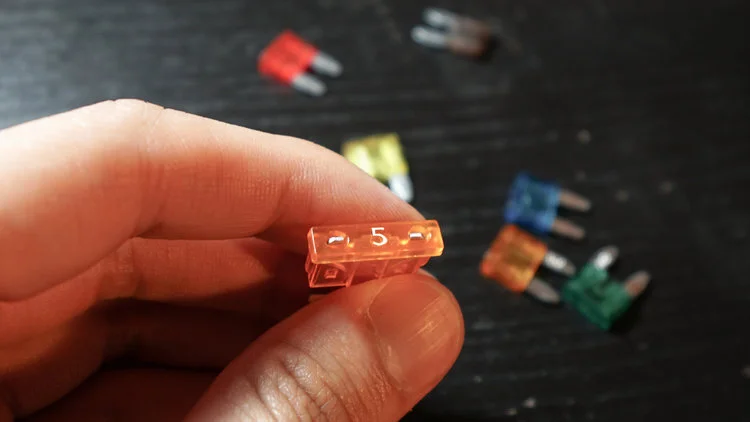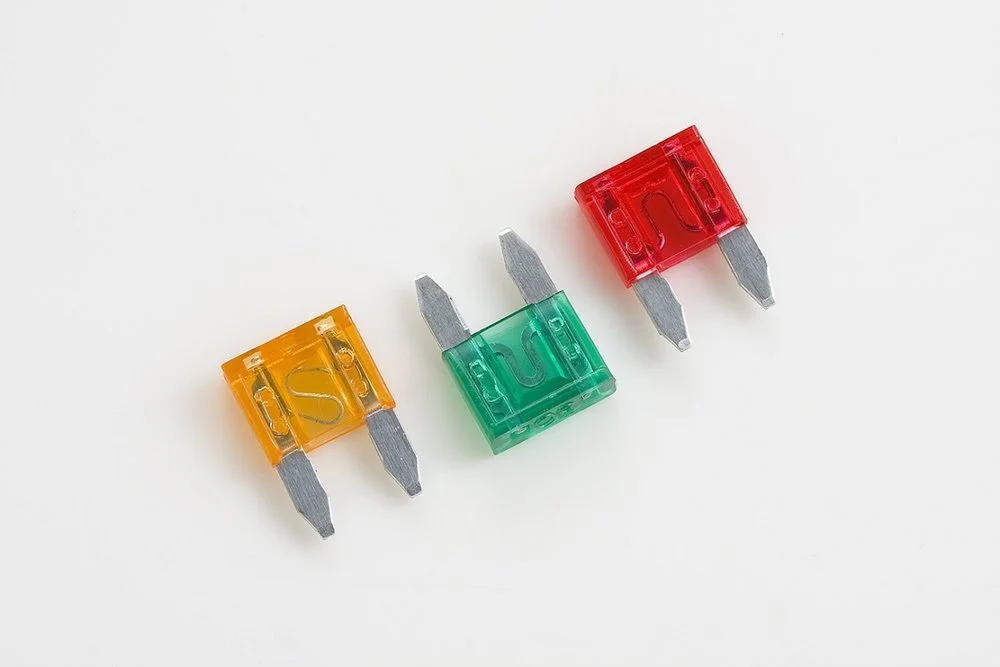How to Identify Your Vehicle's Fuse Type: A Comprehensive Guide
What Is A Fuse?
Fuses are important safety devices used in all kinds of electrical systems, including your car. It is designed to protect the wiring and circuits of your car by providing a quick way to break an electric current when it exceeds certain levels. Fuses play a critical role in protecting the electrical components and devices of your vehicle by preventing possible damage from equipment failures and short circuits. Fuses come in many different shapes and sizes, each designed to protect a circuit within a specific set of electrical parameters. Identifying the right fuse type for your vehicle can be tricky, but at the end of this article, you should be able to identify the correct fuse type for your vehicle.
The Importance of Fuses in Vehicles
Car fuses are essential components of a car’s electrical system, as they protect the wiring and other electrical components from damage due to an overload of electricity. Without fuses, an electrical overload can damage your car’s electrical system and can cause a potential fire hazard. Fuses are designed to blow when too much current passes through them, thus preventing an electrical overload and protecting the car’s electrical components. It is important to check your car’s fuses regularly to ensure they are in good condition and are properly rated for the electrical system of your car. Replacing a blown fuse is relatively easy, and it can help prevent costly repairs in the future.
What is a Fuse Box?
The fuse box in your vehicle houses all of the fuses and relays of your vehicle’s electrical system. The fuse box controls the electrical currents that flow through your car and is designed to protect the car’s electrical components in the event of a short circuit. Locate your fuse box to see what kind and type of fuses your car uses.
Location Of The Fuse Box
Most vehicles have one or more fuse boxes located in various parts of the car. The primary fuse box contains high-voltage engine fuses and relays, while the secondary and third fuse box contains fuses and relays to accessories. Each slot houses a specific fuse that relays power to a specified electrical component e.g. headlights, radio, or cabin lights. Your owner’s manual should provide detailed information about the locations of your fuse boxes and detailed information about the kind of fuses used in each location.
In most cases, the main fuse box can be located under the dashboard on the driver's side. This is usually where all of the fuses that control major electrical components are stored. There may also be additional fuse boxes located in other areas such as under the hood or in the trunk. Each individual fuse box will have its own label indicating what components it controls and which type of fuses should be used in it. Locate the fuse box in your vehicle and use a fuse diagram to see what kind and type of fuse your car uses.
What Is A Blade Fuse?
Blade fuses were introduced in the 1970s and can be found in most vehicles today. They are the most commonly used type of fuse in cars and can come in different shapes and sizes. Most blade fuses are designed for 12v electrical systems and are primarily color-coded with the amperage rating written on top.
These rectangular-shaped fuses have two metal prongs that fit into slots on a fuse panel or fuse box. The rating is printed on the top of the fuse and can range from 1 amp to 50 amps or higher. Blade-type fuses should be replaced with one that matches the same amperage rating as the original.
How Do Blade Fuses Work?
The two metal blades are encased in semi-translucent non-combustible housing and are connected by a strip of metal. The metal strip between the two electrical terminals breaks and melts when too much current flows through it, thus breaking the circuit and stopping the flow of current. When a fuse is blown, the separation of the middle piece will be apparent. A new fuse can be easily replaced in the event of a blown fuse. The rating on the top of the fuse refers to the maximum amount of amperage the fuse can handle before it fails.
Blade Fuse Types
Depending on your vehicle, the type of fuse will differ. The 5 most commonly used fuse types are:
Maxi Blade Fuse: The maxi blade fuse is larger than the regular blade fuse and is used for applications that require higher currents. It is rated for currents up to 120 amperes and is commonly used in trucks, buses, and heavy equipment.
Regular Blade Fuse (ATC/ATO): The regular blade fuse, also known as the ATC/ATO fuse, is the most commonly used type of blade fuse. It is used in a wide range of vehicles and is rated for currents up to 40 amperes.
Mini Blade Fuse (ATM): The mini blade fuse, also known as the ATM fuse, is the smallest type of blade fuse. It is commonly used in modern vehicles and is rated for currents up to 30 amperes.
Low-Profile Mini Blade Fuse (APM/ATM-LP): The low-profile mini-blade fuse, also known as the APM/ATM-LP fuse, is similar to the mini-blade fuse but has a lower profile. This makes it ideal for applications where space is limited.
Micro-Blade Fuse (ATR/ATM): The micro-blade fuse, also known as the ATR/ATM fuse, is even smaller than the mini-blade fuse and is used in modern vehicles with advanced electronics. It is rated for currents up to 30 amperes.
It is important to use the correct type of fuse for your vehicle to ensure proper electrical function and safety. If you are unsure which type of blade fuse is suitable for your vehicle, consult your owner's manual or a professional mechanic.
How To Read The Label On a Fuse
Once you’ve identified the type of fuse your vehicle uses, make sure the fuse you are adding or replacing matches the original fuse that was in the slot. To identify the amperage of the fuse, look at the top of the blade fuse enclosure, and you will find the amp rating. The amp rating is usually printed in a large font and will be followed by an "A".
Inspecting The Fuse For Signs Of Damage Or Wear And Tear
Worn or damaged fuses can be easily replaced. A fuse should be replaced if there are any signs of damage or wear and tear. Look for any indications that the fuse may have been subjected to excessive heat, such as discoloration or melted plastic. Additionally, check the metal contacts on either side of the fuse - if these contacts appear to be corroded or pitted, it's likely that the fuse needs to be replaced.
It's also important to check for any loose wiring around the fuse box - this could indicate a possible short circuit which is causing an excessive current draw and therefore blowing out your fuses. If you do spot any loose wires, make sure to check for broken insulation and other potential hazards before proceeding.
When replacing your vehicle's fuses, it's essential that you follow all manufacturer instructions carefully. This includes making sure that the replacement fuse has the same amp rating and voltage rating as its predecessor, as well as choosing a high-quality product designed specifically for automotive applications. Doing so will ensure maximum safety and reliability while protecting your vehicle from potential electrical damage.
How to Replace a Blown Car Fuse
Once you have identified the blown fuse, you will need to replace it with a new one. Before you do this, it is important to make sure that you have the correct size, type and amperage. You can find this information in the owner’s manual or on the fuse box diagram. Once you have the correct fuse, you will need to remove the old fuse and insert the new one, making sure the metal prongs are lined up properly. Finally, you can test the electrical system to make sure the fuse is working properly. For more complicated electrical systems, it is recommended that you consult a professional to ensure the system is working correctly and that no further damage has been done.
FAQs
Where Is The Fuse Box Located In My Vehicle?
Depending on the make and model of your car, the location of the fuse box can vary. In general, most fuse boxes are located either under the dashboard, near the hood on the driver’s side, or in the trunk.
Once you have located your vehicle’s fuse box, it is important to check the label or fuse diagram that is attached to it. This should indicate which type of fuses are used in each slot. It may also provide information about how many amps each slot holds, which can help you determine if a particular fuse is compatible with your vehicle.
If you are still unsure about what type of fuse you need for your car, it might be best to consult a professional mechanic or auto parts store for advice. They should be able to identify which type and size of fuse will work best for your car and be able to supply you with the correct replacement part.
What Types Of Fuses Are Available For My Vehicle?
Blade fuses are the most commonly used type of fuse in most vehicles. They have two metal prongs on either side that fits into the slots on your fuse box. They come in various sizes and shapes and have an amperage rating written at the top. To determine the type of blade fuses your vehicle uses, check your owner’s manual for a fuse box diagram. A fuse box diagram will show you what kind of fuse goes into each slot and the exact amperage to use. If you are unable to locate a fuse box diagram, consult with your local auto mechanic. They should be able to provide you with the necessary information and help you replace or install a fuse correctly.
How Often Should I Replace My Vehicle's Fuses?
It’s common for fuses to become worn over time from regular use. If you discover a faulty or blown fuse, it is essential that you replace it as soon as possible. Replacing blown fuses can ensure optimal performance of your vehicle and promote the safe use of your vehicle.
Are Fuses Specific To The Make And Model Of a Vehicle?
A fuse is a device that contains a strip of metal that melts when too much current passes through it. This strip of metal acts as a safety measure and prevents electrical components from being overloaded in the event of a power surge. Fuses come in various types and sizes, depending on the make and model of your car.
Manufacturers design different types of fuses based on the electrical system requirements for each specific make and model. For example, some vehicles require high-amp fuses while others may need low-amp fuses. Therefore, when purchasing or replacing fuses for your vehicle, it's essential to consult with your owner's manual or dealership for details about which type you need for your particular car.
Using the wrong type of fuse can have serious consequences, so it's important to take care when replacing them in your vehicle. It's best to buy replacement fuses from trusted sources like automotive stores or dealerships to ensure you're getting the right type for your car. Taking these precautions will help protect you and keep your car running safely and soundly.
Ask an Expert
Have a question? Reach out to our team and get the help you need. Live Chat available 9AM-5PM M-F PST.




